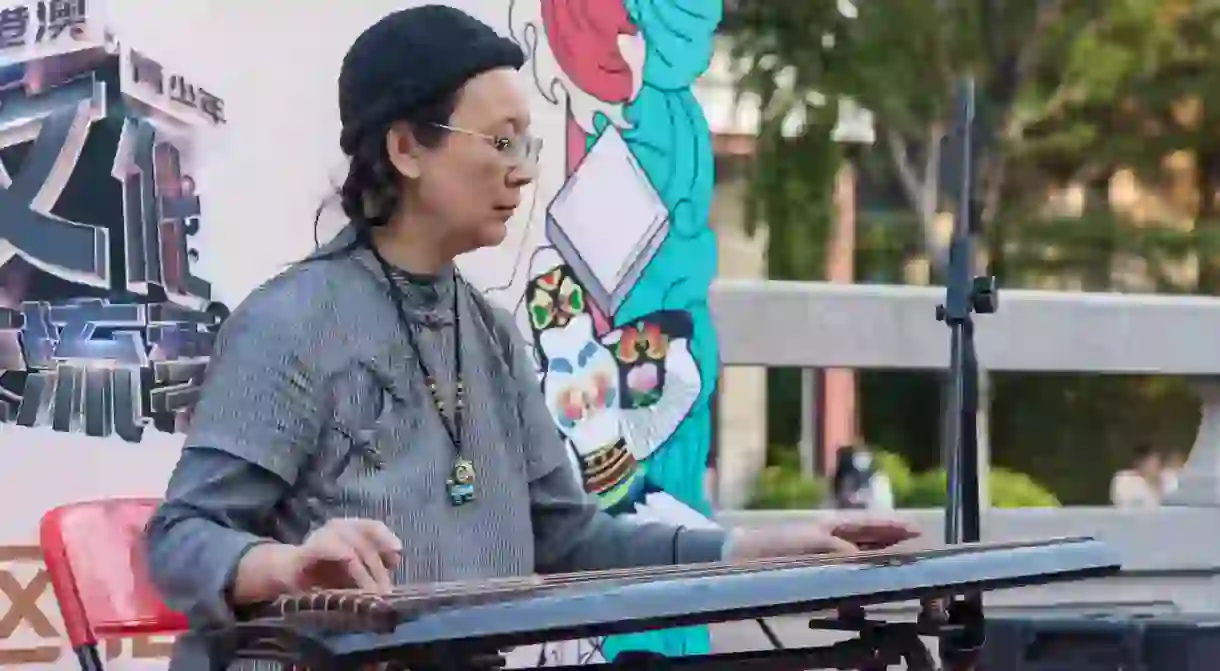Obscure Chinese Musical Instruments

Musical instruments have a long and storied history in China, yet few foreigners know many beyond the gong. With some existing for thousands of years, Chinese musical instruments are so plentiful that they can be divided into eight separate categories: silk, bamboo, wood, stone, metal, clay, gourd, and skin. China boasts a rich array of musical instruments that have been cherished and played for centuries, each with its distinct charm and captivating melodies. Here are the most interesting from those categories.
Did you know – Culture Trip now does bookable, small-group trips? Pick from authentic, immersive Epic Trips, compact and action-packed Mini Trips and sparkling, expansive Sailing Trips.
Pipa
The pipa is a four-stringed, pear-shaped Chinese lute that is played by plucking. It is also one of the oldest Chinese instruments, dating back to the Han Dynasty (206BC-220AD) or earlier. Thought to have been introduced to China from Central or South Asia, the pipa is evidence of early cosmopolitanism in China.
Erhu

This is one of the most common Chinese instruments – a two-stringed, bowed fiddle used in solo and orchestral performances. While its calm sounds are well-suited to traditional musical styles, the erhu can also be used in contemporary music arrangements, from pop to jazz.
Guqin
The guqin, or ancient zither, is a plucked seven-string musical instrument. Similar in sound to a sliding guitar, the guqin is associated with elegance and has long been the favored instrument of scholars, most famously the philosopher Confucius.
Dizi

The versatile dizi, or Chinese transverse flute, is used in many genres of folk music and Chinese opera. Traditionally made of a single piece of bamboo, the dizi fits in the woodwind category of instruments. A special membrane placed over an extra hole gives the final tone a unique buzzing quality.
Paiban
Paiban is a clapping instrument made from two flat pieces of hardwood or bamboo. Held vertically, the instrument makes a sharp, clacking sound when played. When used in conjunction with a small drum, it is a common feature of Shaoxing opera.
Bianqing
The bianqing percussion instrument, most comparable to a lithophone, is made of L-shaped flat stone chimes hung in a wooden frame and played by striking them with a mallet. The instrument dates back to ancient court rituals and was exported to Korea and Vietnam, where it has remained popular.
Sheng
The sheng is a mouth-blown free-reed instrument made of several vertical pipes. With images depicting it dating back to 1100 BC, it is one of the oldest Chinese instruments. It has also gained popularity outside of the country, with several notable foreign composers making use of its distinctive sound in their compositions.
Bolang Gu
The bolang gu is a Chinese pellet drum whose original use was as part of religious rituals, but became co-opted as a popular children’s toy. The drum is easy to play as a noisemaker and can even be thought of as a musical rattle.
Muyu
Literally translating as “wooden fish,” the muyu is a wooden percussion instrument most commonly used by Buddhist monks to keep the rhythm during Mahayana sutra chanting. In Mandarin, “yu” is a homophone which can mean “fish” or “surplus.” So the wooden fish has come to symbolize wealth and abundance.
Dagu
The dagu is a large drum played with two sticks. The term is synonymous with a type of traditional musical storytelling in which a mix of singing and speaking, is accompanied by percussion instruments – typically a small drum.













